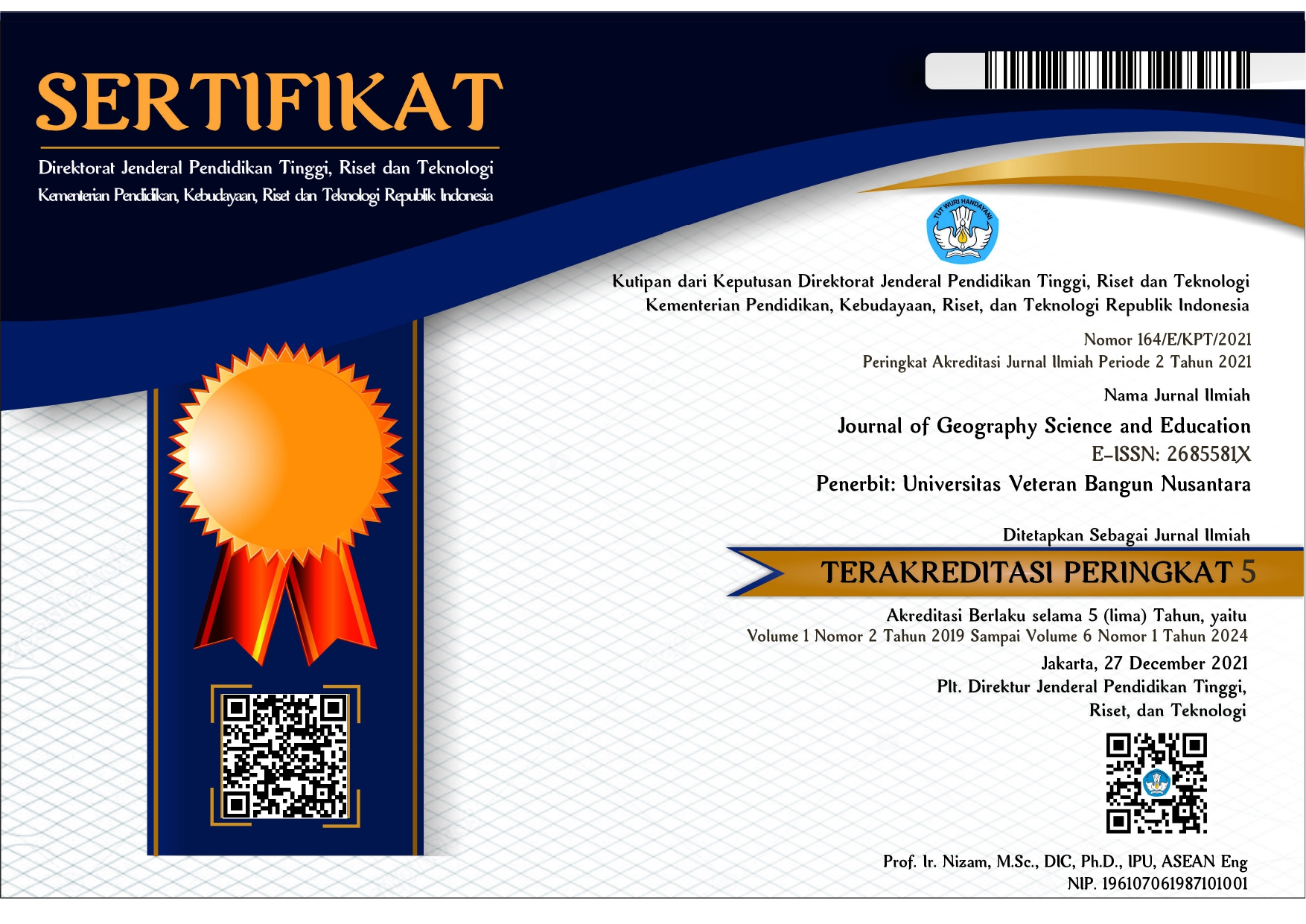Can Disaster Risk Education Reduce the Impact of Disasters in Schools?
DOI:
https://doi.org/10.32585/jgse.v4i2.2363Keywords:
Disaster Risk Education, Reduce, Impact of Disasters, SchoolsAbstract
One of the largest cities in Indonesia is Semarang City. This city has a very high level of disaster proneness. The following are disasters that often occur in the city of Semarang, including floods, tidal waves, landslides, and droughts. The impact of repeated disasters on urban communities is damage and loss of life. However, currently disaster risk education introduces risk mitigation and disaster preparedness in minimizing the impact of disasters in urban areas. Disaster risk reduction has been included in the school curriculum. The purpose of writing this article is to examine the role of schools in disaster mitigation, disaster curriculum in schools. Empowering school-age children to understand disaster mitigation is the first step in building a disaster-aware community. So that when a disaster occurs, people no longer experience confusion and panic, because they have understood how to reduce disaster risk. School-age children are expected to be able to bring the knowledge they have learned from school and become "agents" who can build a culture of disaster awareness in their environment, so that a resilient society can be realized in dealing with disasters.Downloads
References
(n.d.). Badan Penanggulangan Bencana Daerah Kota Semarang. https://bpbd.semarangkota.go.id/po-content/uploads/RESUME_DATA_BENCANA_2021.pdf
Colletta, N J., dan U Kayam. (1987). Kebudayaan dan Pembangunan. Sebuah Pendekatan Terhadap Antropologi Terapan di Indonesia. Yayasan Obor Indonesia.
Dapur Ilmiah, (2018). Penelitian Literatur. (http://dapurilmiah.blogspot.co.id/2014/06/ penelitian-literatur.html)
Em-dat. (n.d.). (2009). EM-DAT | The international disasters database. https://www.emdat.be/classification
Perdana, N. (2016). Menurunkan Resiko Bencana (A. M. A. dan M. Nawir (ed.)). Masaggena Press.
Sosial, K. (2012). Menteri sosial republik indonesia. Bphn, 2008, 1–4. https://doi.org/10.1017/CBO9781107415324. 004
Suharwoto, dkk., (2015). “Modul 3. Pilar 3 – Pendidikan Pencegahan dan Pengurangan Risiko Bencana”. Jakarta: Biro Perencanaan dan Kerjasama Luar Negeri Sekretariat Jenderal Kemendikbud.
Undang-undang Republik Indonesia Nomor 24 Tahun 2007 tentang Penanggulangan Bencana Dan PP No. 21, 22, 23 Dan Perpres No. 8 tahun 2008. (2008).
Wijaya, O., & Isni, K. (2017). Pelatihan Penyusunan Rencana Evakuasi Bencana di SD Muhammadiyah Se-kecamatan Banguntapan , Bantul, DIY. 1(2), 413–422.
Downloads
Published
How to Cite
Issue
Section
License
Authors who publish with the Journal of Geography Science and Education agree to the following terms:
- Authors retain copyright and grant the journal the right of first publication with the work simultaneously licensed under a Creative Commons Attribution License (CC BY-SA 4.0) that allows others to share the work with an acknowledgment of the work's authorship and initial publication in this journal.
- Authors are able to enter into separate, additional contractual arrangements for the non-exclusive distribution of the journal's published version of the work (e.g., post it to an institutional repository or publish it in a book), with an acknowledgment of its initial publication in this journal.
- Authors are permitted and encouraged to post their work online (e.g., in institutional repositories or on their website) prior to and during the submission process, as it can lead to productive exchanges, as well as earlier and greater citation of published work.










